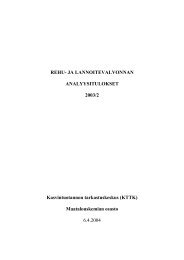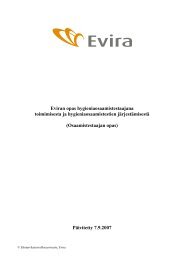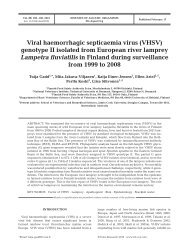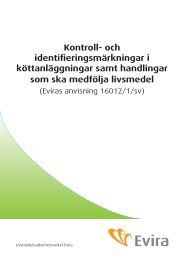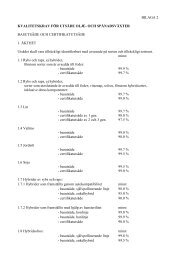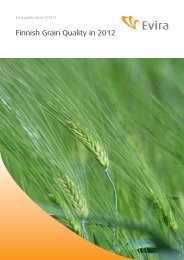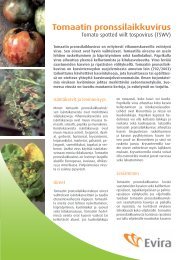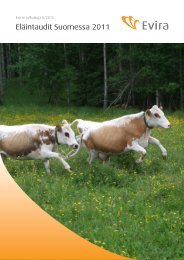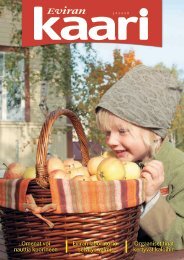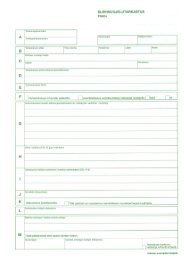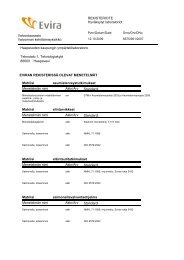Download PDF, 1522 kB - Evira
Download PDF, 1522 kB - Evira
Download PDF, 1522 kB - Evira
You also want an ePaper? Increase the reach of your titles
YUMPU automatically turns print PDFs into web optimized ePapers that Google loves.
1 introduction<br />
Terhi Laaksonen, Senior Veterinary Officer, Ministry of Agriculture and<br />
Forestry, MMM<br />
Food borne infections caused by Salmonella bacteria continuously present a<br />
significant economic and national health problem throughout the world. By international<br />
estimates, the situation in Finland is particularly good. The country has<br />
invested in preventing Salmonella among production animals, and subsequently<br />
in feeds, and for decades the occurrence of Salmonella in foods of animal origin<br />
has been low.<br />
The National Salmonella Control Programme covers poultry, pigs and cattle,<br />
and meat and eggs from these. This programme has been in effect since 1995<br />
and reached 10 years of age in 2004. Salmonella legislation by the European<br />
Union has developed significantly in recent years. Current efforts are aimed at<br />
revising the national control programme in accordance with requirements of new<br />
EC legislation. This publication is a compilation of results obtained during the<br />
decade the programme has been in operation. Besides celebrating the ten-year<br />
span of the programme, the purpose of the publication also is to bring together<br />
accumulated experiences as a basis for assessing the programme, which is<br />
required for its improvement.<br />
Salmonella prevention requires co-operation among several fields. Actions are<br />
necessary in areas involving the control and research of health care, food production,<br />
feedstuff production and veterinary medicine. In addition to surveying<br />
the Salmonella control programme, the authors of the publication also wish to<br />
account for other activities pertaining to Salmonella prevention and thus produce<br />
a more comprehensive overall picture.<br />
In Finland, Salmonella prevention has been found cost-efficient. Prevention demands<br />
ample resources, though. The authors of this publication particularly wish<br />
to express their gratitude to all municipal veterinarians, inspection veterinarians,<br />
feed and food supervisors, laboratory personnel, health-care workers, food-chain<br />
operators and all the other parties in the field, whose daily work efforts have made<br />
efficient Salmonella prevention possible.<br />
Salmonella control and occurence of Salmonella from 1995 to 2004



